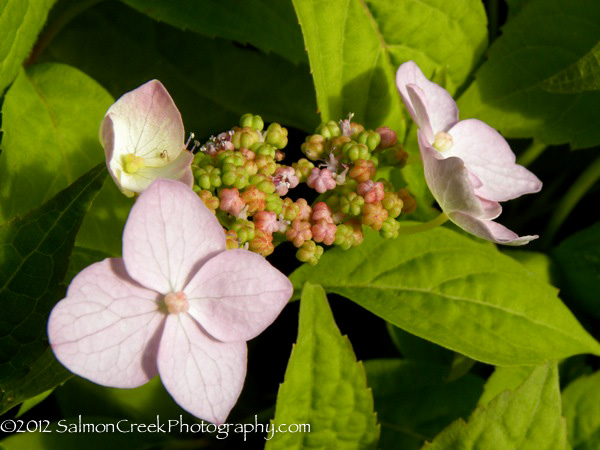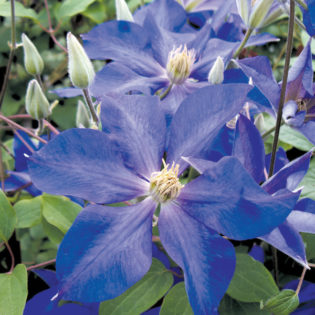The Hydrangea That Climbs Like Ivy
The Hydrangea That Climbs Like Ivy
Climbing hydrangeas are a beautiful and versatile addition to any garden. These deciduous vines can grow up to 30 feet tall and 20 feet wide, making them perfect for covering walls, fences, and other structures. They also produce stunning white flowers in the summer, which can add a touch of elegance to any outdoor space.
What is a climbing hydrangea?
Climbing hydrangeas (Hydrangea anomala petiolaris) are a type of hydrangea that can climb up walls and other structures using aerial rootlets. These rootlets are small, suction-like pads that attach to the surface of the plant's support. As the vine grows, it produces more and more rootlets, which help it to grip the support more tightly.
Climbing hydrangeas are native to Asia, and they can be found growing wild in forests and along mountain slopes. They are also popular garden plants in many parts of the world, including North America, Europe, and Australia.
How to grow a climbing hydrangea
Climbing hydrangeas are relatively easy to grow, but they do best in full sun or partial shade. They prefer moist, well-drained soil, and they should be watered regularly, especially during the first year after planting. Climbing hydrangeas are also susceptible to winter damage, so they should be planted in an area that is protected from cold winds.
To plant a climbing hydrangea, dig a hole that is twice as wide and as deep as the root ball of the plant. Add some compost or other organic matter to the soil, and then place the plant in the hole. Backfill the hole with soil, and water the plant thoroughly.
Once the plant is established, you can fertilize it in the spring with a balanced fertilizer. You may also need to prune the plant occasionally to keep it in shape. Climbing hydrangeas can be pruned in the spring or fall, but it is best to avoid pruning in the summer, when the plant is flowering.
Climbing hydrangeas are relatively pest- and disease-free, but they can be susceptible to scale insects and powdery mildew. If you see any signs of pests or diseases, treat the plant immediately with an appropriate pesticide or fungicide.
How to care for a climbing hydrangea
Climbing hydrangeas are relatively low-maintenance plants, but there are a few things you can do to keep them healthy and looking their best.
- Water regularly, especially during the first year after planting.
- Fertilize in the spring with a balanced fertilizer.
- Prune occasionally to keep the plant in shape.
- Protect the plant from winter damage.
If you live in an area with cold winters, you may need to cover your climbing hydrangea with a burlap sack or other protective covering. You should also remove any dead or damaged leaves and branches in the spring.
Climbing hydrangeas are a beautiful and versatile addition to any garden. With a little care, they can provide years of enjoyment.
If you're looking for a beautiful and easy-to-care-for climbing vine, then the hydrangea petiolaris miranda is a great option. This plant is known for its stunning variegated foliage, which features dark green leaves with a creamy yellow margin. In the summer, it produces fragrant white flowers that add to its beauty.
The hydrangea petiolaris miranda is a vigorous grower, and it can reach heights of up to 30 feet. It's also a self-clinging vine, so it doesn't need any help to climb up a wall or trellis. This makes it a great choice for covering unsightly areas, or for adding a touch of elegance to your home's exterior.
If you're interested in learning more about the hydrangea petiolaris miranda, I recommend visiting . This website has a wealth of information about this plant, including its care requirements, planting instructions, and more.
FAQ of hydrangea petiolaris miranda
- What is Hydrangea petiolaris Miranda?
Hydrangea petiolaris Miranda is a type of climbing hydrangea that is known for its white flowers and glossy green leaves. It is a vigorous grower and can reach heights of up to 30 feet. Miranda is a hardy plant that can tolerate a wide range of climates. It is best planted in full sun or partial shade and moist, well-drained soil.
- How quickly does Hydrangea petiolaris Miranda grow?
Hydrangea petiolaris Miranda is a fast-growing plant. It can grow up to 3 feet per year. It is important to provide the plant with a sturdy support as it grows.
- When does Hydrangea petiolaris Miranda flower?
Hydrangea petiolaris Miranda flowers in late spring or early summer. The flowers bloom for about 2-3 weeks.
- How to care for Hydrangea petiolaris Miranda?
Hydrangea petiolaris Miranda is a relatively low-maintenance plant. It needs to be watered regularly, especially during hot, dry weather. The plant should also be fertilized once a year in the spring.
- What are some common problems with Hydrangea petiolaris Miranda?
The most common problems with Hydrangea petiolaris Miranda are pests and diseases. The plant can be susceptible to aphids, scale insects, and powdery mildew. It is important to inspect the plant regularly and treat any problems as soon as they are identified.
Image of hydrangea petiolaris miranda
5 different images of "hydrangea petiolaris miranda" from Pinterest:
- Image 1: A white hydrangea petiolaris miranda climbing up a trellis.
- Image 2: A pink hydrangea petiolaris miranda cascading down a wall.

- Image 3: A blue hydrangea petiolaris miranda blooming in a garden.

- Image 4: A close-up of the flowers of a hydrangea petiolaris miranda.

- Image 5: A mature hydrangea petiolaris miranda covering a pergola.


Post a Comment for "The Hydrangea That Climbs Like Ivy"